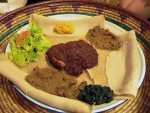We were excited to hear that Zara Quiroga—Portuguese food and travel writer, and one of the two forces behind travel site Backpack ME—had released an e-book called Lisbon in 100 Bites, for the purely selfish reason that we are planning a food trip there ourselves this fall! But our personal travels aside, Zara and her drool-worthy book are treasure troves of information for anyone interested in Portuguese food and food culture. We asked her a few questions.
.jpeg)
You are from Portugal. When and why did you decide to create a Lisbon food book?
I am half Portuguese and half Spanish. I was born and raised in the north of Portugal, in a town called Valença do Minho, right at the border with Spain. I studied in Lisbon and left Portugal a few years after finishing college. It was when I started traveling internationally that I realized people abroad seldom knew anything about Portuguese food. Paella? No... Fajitas? Certainly not! It made me a little sad to see that Portuguese cuisine was not very present in the restaurant scene of many big cities abroad. And I felt even worse that foodies didn’t have a good resource to understand Portuguese food culture, even when they were already planning their travels to Portugal.
As I often write about Portuguese food on my travel blog, Backpack ME, I decided to take things a little further and create the food guide Lisbon was so far missing. I didn’t want to write down a listing of places to eat at, though! As such, Lisbon in 100 Bites works as an introduction to the dishes and typical products visitors should definitely try while in Portugal—those recipes and flavors that are so local and down-to-earth, and that anyone will come across in my country. Lisbon in 100 Bites is not a pretentious guide. It’s all about good food, presented in an unpretentious yet appetizing way.
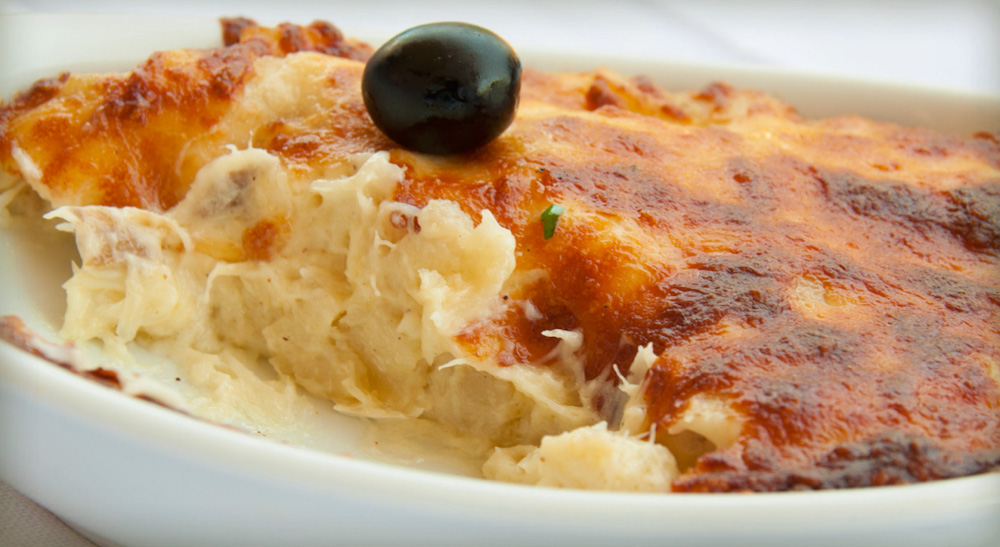
Bacalhau com natas. All pics courtesy of Zara Quiroga.
What’s the most Portuguese of Portuguese foods, in your opinion?
Without a doubt, it's salted codfish, or bacalhau. It’s gained the nickname “loyal friend” in Portuguese households. They say there are more than 365 recipes of codfish in Portugal—at least one for each day of the year. This dried salted fish might be something of an acquired taste, so if you aren’t too sure about it, I’d recommend trying the cod fritters known as pasteis de bacalhau, or bacalhau com natas, an oven-baked dish with cod and creamy potatoes.
If you could eat only three dishes in Lisbon, what are they?
We can improvise a delicious three-course Lisbon meal right here! Start with amêijoas à bulhão pato, a dish of clams cooked in white wine, garlic, and herbs. Make sure you have a bread basket nearby, because the clams are served swimming in a tangy sauce you’ll want to dip your bread in till the plate is dry. Because visiting Portugal and not eating at least one cod dish would almost be a sin, follow with bacalhau à brás. This traditional recipe involves shredded codfish sautéed with string potatoes, onions, and eggs, topped with olives. Think of it as a very Portuguese scramble…but definitely not something you’d eat for breakfast. Choosing dessert in Portugal can be tough, because the choices in even the simplest of restaurants are plentiful. Want to end on a high note? Treat yourself to pudim abade de priscos, an egg pudding made with melted bacon, bathed in caramel. If you get all of this for lunch, chances are you won’t feel like having dinner. But you will be happy!
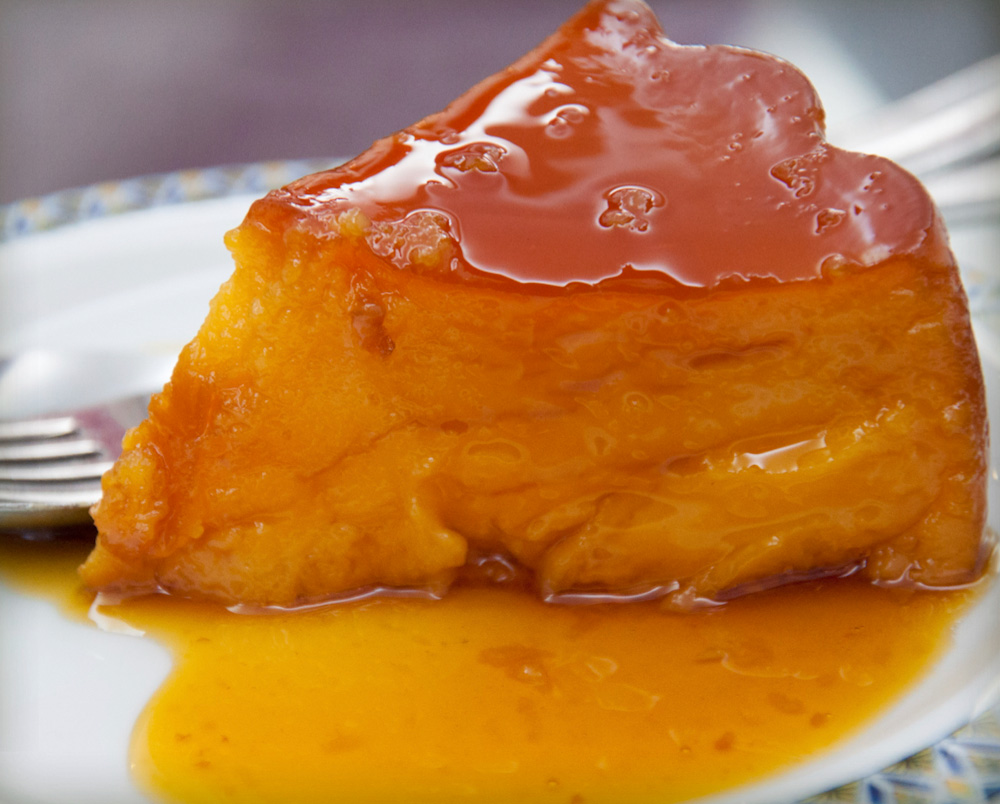
Pudim abade de priscos: egg, caramel...and bacon!
What's a dish most travelers miss (and shouldn't!) when they visit Lisbon?
Polvo à lagareiro may be a little intimidating for some people, but I assure you it is worth a try. It’s a typical dish of roasted octopus, bathed in abundant golden olive oil. The tentacles are served in big pieces so, looks wise, those who aren’t used to eating octopus might find it a little unappealing. But put that aside and be ready to taste soft and flavorful octopus, with the luscious touch of olive oil. It’s a rather simple recipe, but represents a truly Portuguese foodie experience.
What is the best food-related phrase to know how to speak in Portuguese while in Portugal?
I’d suggest you learn how to ask how much something costs. Even though most people you’ll interact with in Portugal will understand at least basic English, in Portuguese you’d say, “Quanto custa?” This sentence will come in handy in two particular instances. The first is when you sit down at a restaurant and are presented with goodies such as a bread basket, butter, marinated olives, cheese, and perhaps even a little charcuterie platter or seafood salad. You may think the establishment is very generous, but the truth is that these items are charged as couvert (cover). You have to only pay for the things you eat, not everything, and the prices are most likely written down in the menu. But if this is not clear and you’d be more comfortable, it’s better to ask for the price. The second situation where this phrase is helpful is when you go to a seafood restaurant and choose some fish or shellfish that is priced by the kilogram. Often, particularly in touristy areas, waiters will point at the display and ask you if something looks good. It is useful to know how much something costs before placing your order. Inquire for the final price, and let them weigh the food first, if you want to make sure it all works for you. The lobster will be delicious, sure, but no one wants to end with a bitter aftertaste!

Beware the couvert!
We were surprised at all the desserts in your book! Why do you think sobremesa is so integral to a Portuguese meal? And what's your favorite?
The history of Portuguese sweets and desserts is highly linked to the religious institutions in our country. A lot of Portuguese sweets were invented in convents. People used to gift eggs to nuns. Apparently, they used the egg whites to press their white gowns, to make them crisp. As such, they had a lot of egg yolks left over. Instead of throwing them away (that would certainly be a sin!), they started developing recipes. That is why Portuguese desserts are extremely egg-based. Funnily enough, eating sobremesa in Portugal is something people do almost religiously!
As a chocolate lover, my favorite dessert in Portugal is mousse de chocolate. It’s not something uniquely Portuguese, I know. But mousse in Portugal is different. While many would rave about a mousse based upon how fluffy it is, in Portugal mousse tends to have a caramel-like texture. Once again, I think the amount of eggs involved in the recipe is to blame!
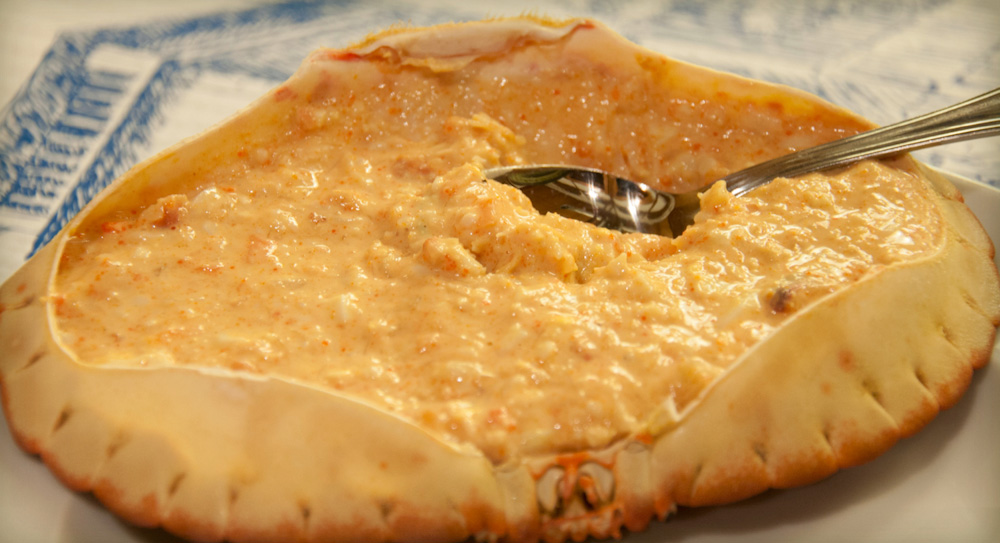
Sapateira recheada, stuffed crab
What's the best "food memory" of yours...inspired by Lisbon? Go!
One of my fondest Lisbon food memories happened when Ashray, my husband and travel partner, came to Portugal for the first time. We flew to Lisbon from a quick vacation in London, where, being budget conscious, we hadn’t had such a great foodie time. We were picked up at the airport by my sister and brother-in-law and, 20 minutes later, were sitting at Cervejaria Trindade for lunch. This is a stunning restaurant, housed in a building that was a convent centuries ago. The walls are covered in traditional Portuguese tiles and, more important, it serves glorious Portuguese food. That day, we feasted with no budget in mind! We started with sapateira recheada (stuffed crab) and clams in white wine sauce. I remember we ordered roasted Iberian black pork as a main dish. The meat was tender and served on a bed of sautéed turnip greens, with an oven-baked cornmeal crust. For a sweet dish, I ordered chocolate mousse, because it’s my all-time favorite dessert (see above!) and I wanted my love to try it, too. Good food tastes even better when shared with the people you care about.
For more about Lisbon in 100 Bites, which can be downloaded instantly as a PDF for US$9.99, check out the book's website, visit Backpack ME, or buy the book directly here.
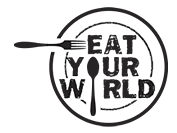









.jpg)
